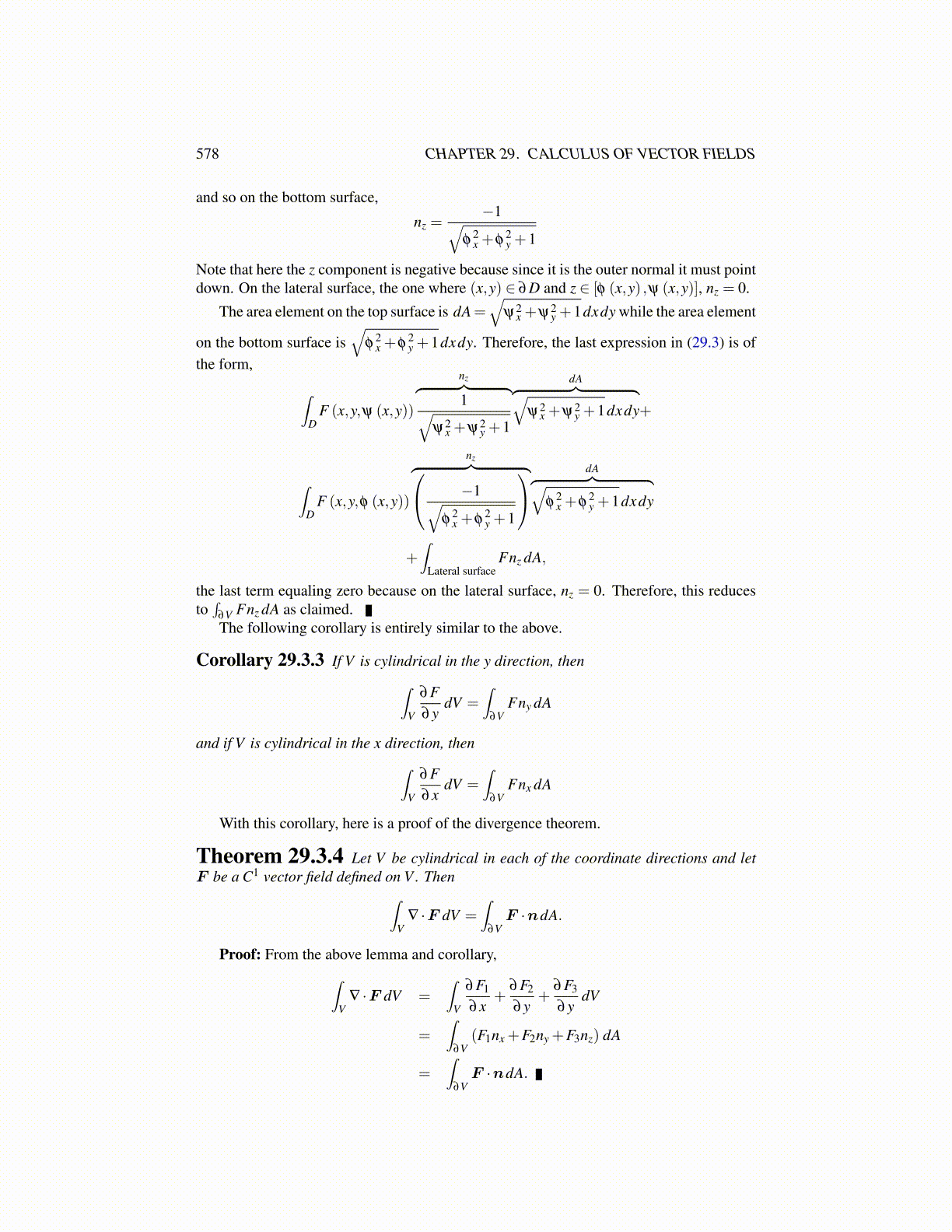
578 CHAPTER 29. CALCULUS OF VECTOR FIELDS
assumed that water is incompressible1. Therefore, this is the mass of water at any depth.Therefore,
∂ p∂x
i+∂ p∂y
j+∂ p∂ z
k=62.532
×32k.
and so p does not depend on x and y and is only a function of z. It follows p(0) = 0, andp′ (z) = 62.5. Therefore, p(x,y,z) = 62.5z. This establishes the claim. This is interestingbut 29.5 is more interesting because it does not require ρ to be constant.
29.4.2 Archimedes Law of BuoyancyArchimedes principle states that when a solid body is immersed in a fluid, the net force act-ing on the body by the fluid is directly up and equals the total weight of the fluid displaced.
Denote the set of points in three dimensions occupied by the body as V . Then for dAan increment of area on the surface of this body, the force acting on this increment of areawould equal −pdAn where n is the exterior unit normal. Therefore, since the fluid doesnot move, ∫
∂V−pndA =
∫V−∇pdV =
∫V
ρgdVk
Which equals the total weight of the displaced fluid and you note the force is directedupward as claimed. Here ρ is the density and 29.5 is being used. There is an interestingpoint in the above explanation. Why does the second equation hold? Imagine that V werefilled with fluid. Then the equation follows from 29.5 because in this equation g =−gk.
29.4.3 Equations of Heat and DiffusionLet x be a point in three dimensional space and let (x1,x2,x3) be Cartesian coordinates ofthis point. Let there be a three dimensional body having density ρ = ρ (x, t).
The heat flux J, in the body is defined as a vector which has the following property.
Rate at which heat crosses S =∫
SJ ·ndA
where n is the unit normal in the desired direction. Thus if V is a three dimensional body,
Rate at which heat leaves V =∫
∂VJ ·ndA
where n is the unit exterior normal.Fourier’s law of heat conduction states that the heat flux J satisfies J =−k∇(u) where
u is the temperature and k = k (u,x, t) is called the coefficient of thermal conductivity. Thischanges depending on the material. It also can be shown by experiment to change withtemperature. This equation for the heat flux states that the heat flows from hot placestoward colder places in the direction of greatest rate of decrease in temperature. Let c(x, t)denote the specific heat of the material in the body. This means the amount of heat withinV is given by the formula
∫V ρ (x, t)c(x, t)u(x, t) dV . Suppose also there are sources for
the heat within the material given by f (x,u, t). If f is positive, the heat is increasing whileif f is negative the heat is decreasing. For example such sources could result from a
1There is no such thing as an incompressible fluid but this doesn’t stop people from making this assumption.